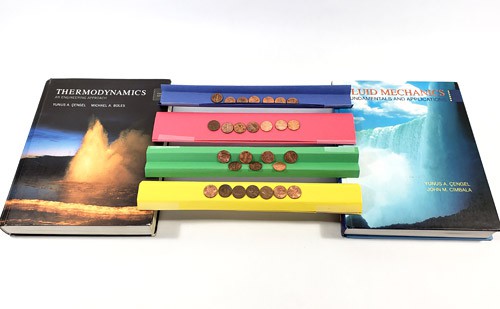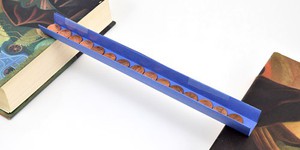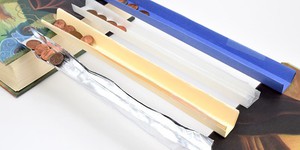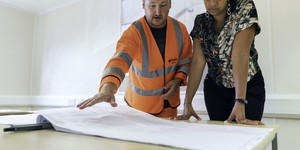Summary
Introduction
Bridges come in all shapes, sizes, and materials. What makes a bridge the strongest? Find out in this fun activity as you build simple bridges with paper and test to see how much weight they can hold.
Materials
- Two thick books or small boxes
- Paper
- Tape
- Coins or other small, heavy objects to use as weights (small rocks, nuts and bolts, etc.)
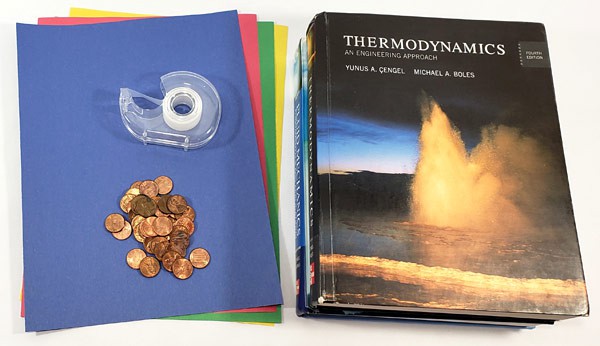 Image Credit: Ben Finio, Science Buddies / Science Buddies
Image Credit: Ben Finio, Science Buddies / Science Buddies
Instructions
- Place your books about 10 inches apart.
- Lay a single piece of paper across the books.
- Place a penny in the middle of the paper. What happens? If the "bridge" does not collapse, try adding more pennies.
- Fold the piece of paper in half lengthwise, and try again. Does the bridge hold more pennies this time?
- Now fold the paper into a "channel" shape. Fold the paper in half lengthwise twice. Then, fold up the edges to form walls. Use tape to hold the edges in place, to prevent the bridge from unfolding.
- Place a penny in the middle of the bridge. One at a time, keep adding pennies along the length of the bridge. This simulates how real cars and people are spread out along the length of a bridge. Do not stack them all on top of each other in the middle.
- If you fill up the whole bridge, start a second layer of pennies. Keep adding pennies until the bridge collapses.
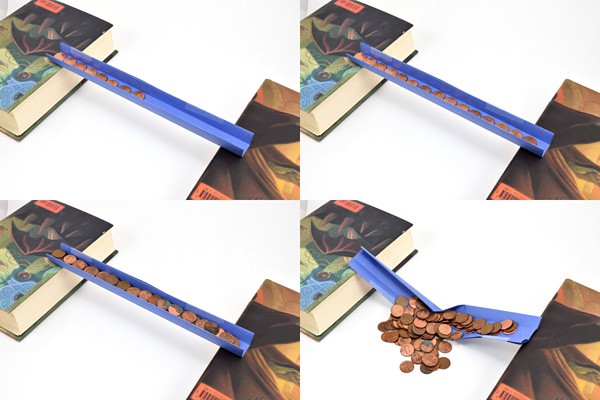 Image Credit: Ben Finio, Science Buddies / Science Buddies
Image Credit: Ben Finio, Science Buddies / Science Buddies
- Experiment with different shapes for your bridge. For example, try changing the number of times you fold the paper in half, the width of the base, or the height of the walls.What shape makes the strongest bridge?
- There are many other simple experiments you can do. See the Further Exploration section for some ideas.
What Happened?
You probably found that a single, flat piece of paper could barely support its own weight, let alone any pennies. Folding the paper in half may have made it strong enough to support a few pennies. The more times you folded the paper in half, the stronger it got. Changing the shape of the bridge to give it vertical "walls" made it significantly stronger, and it could probably hold dozens of pennies. While a horizontal piece of paper is very easy to bend in the vertical direction, the vertical wall sections are very difficult to bend in the vertical direction, making the bridge very strong.
Digging Deeper
Have you ever tried bending a ruler? If so, you probably bent it in the "thin" dimension and not the "thick" dimension. It is much easier to bend one way than the other! In general, the shape of a material can dramatically affect its strength. Engineers take advantage of this fact when building bridges or other large structures. Most of the metal beams that support them have hollow cross-sectional shapes like circles, squares, or letters like "C," "U," or "I." These beams are very resistant to bending, but require far less material than a completely solid beam. This makes them more lightweight and less expensive, since less material is required. Alternatively, given a limited amount of material, you can make it very strong depending on how you shape it. This is what you discovered when building a bridge out of a single sheet of paper in this project. A flat piece of paper is very easy to bend, so it makes a very poor bridge. By folding the paper into different shapes, you can make a much stronger bridge, even though you did not add more material.
Ask an Expert
For Further Exploration
- Try building bridges from other household materials, like aluminum foil, wax paper, or cardstock. Which material is the strongest?
- Experiment with different shapes. What happens if you roll a piece of paper into a cylindrical tube, or fold it into a "W" shape?
- Try making a longer bridge by taping two pieces of paper together end-to-end. How long can you make your bridge before it collapses under its own weight?
Related Resources
Project Ideas
Lesson Plans
- K-2-ETS1-2. Develop a simple sketch, drawing, or physical model to illustrate how the shape of an object helps it function as needed to solve a given problem.
- K-2-ETS1-3. Analyze data from tests of two objects designed to solve the same problem to compare the strengths and weaknesses of how each performs.
- 2-PS1-2. Analyze data obtained from testing different materials to determine which materials have the properties that are best suited for an intended purpose.


